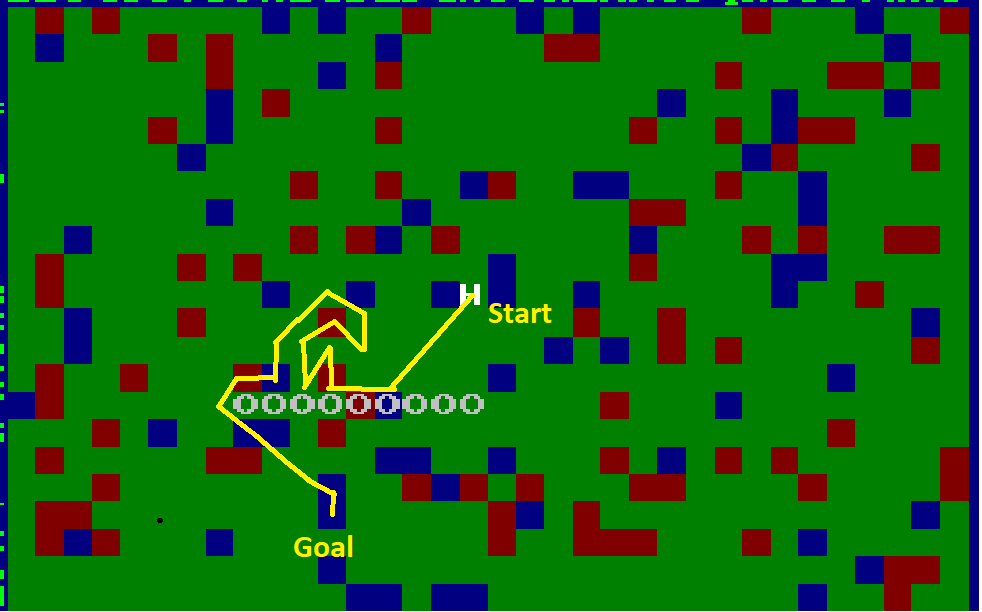I'll jump straight into the context:
I have a 2D grid map stored into a simple 2D object array. Every object and agent exists on this 2D array (so their positions are discrete and binded to their location on the array). I'm expecting agents to move quite a bit, so the grid is dynamic in nature. The game itself is fully deterministic and discrete operations based, the goal being to make it multiplayer portable (with the lockstep method). I'd like to populate the map with large impassable structure, concave and convex, such as buildings and lakes.
These agents are rigged with an FSM for decision making. I wish them to be able to act on these decision in believable way, and one of these challenges is to allow them A > B navigation that works and looks believable.
I'd like to have as much active npc in the world as possible, and right now the biggest hurdle is finding the right path finding algorithm. I'm not sure about my update tick budget, but right now I'm thinking anything reliably less than ~500ms would be acceptable (I'm making the game "turn based" for testing purposes, and wish to later make it real time using a good amount of linear interpolation on the display layer).
At this time I have a 100x100 map for testing, with hundreds of agents (with almost fully implemented AI, lacking path finding and collision detection), and a tick time of 10ms.
What pathfinding algorithm and implementation would suit this situation ? I know A* would be okay-ish, but since the grid changes every ticks, and the number of agents is quite large, I'm not sure it would be the best (short of computing the path once and evaluating if a collision occurred each travelling steps, then recomputing it). I'm trying to keep everything simple, and I am willing to reduce the scope of the simulation regarding the number of active agents to do so. Any idea or advice ?
FYI, I'm not sure if I'm doing this right, but every agent has a command list, which contains a list of "todos" populated by the fsm and ran each ticks (the first command in line). The pathfinding algorithm would be contained in the command object, so the flexibility is quite large (it could be broken down into smaller steps).





